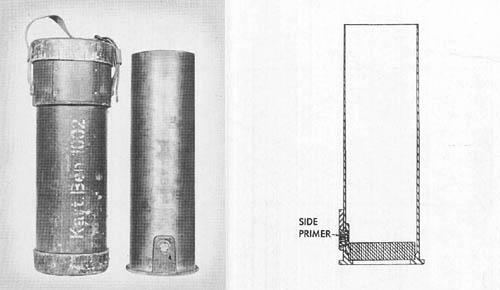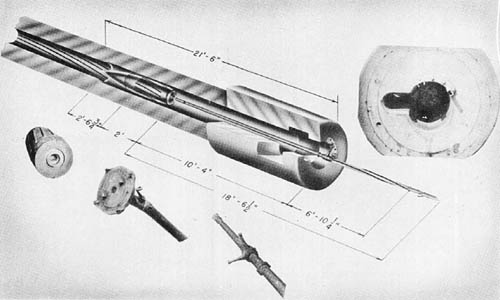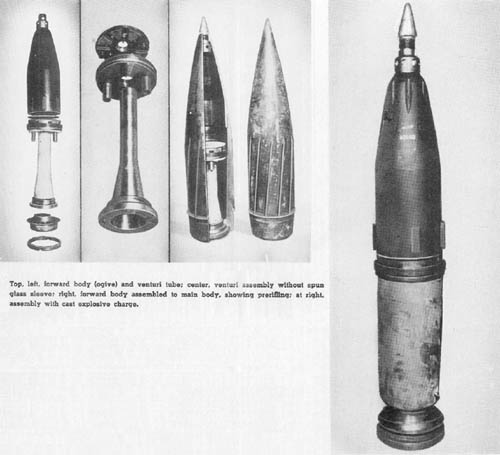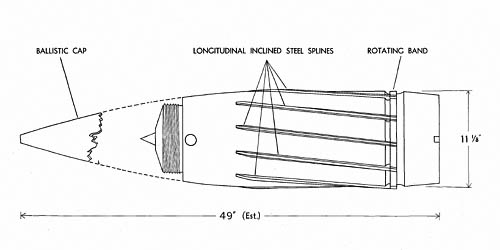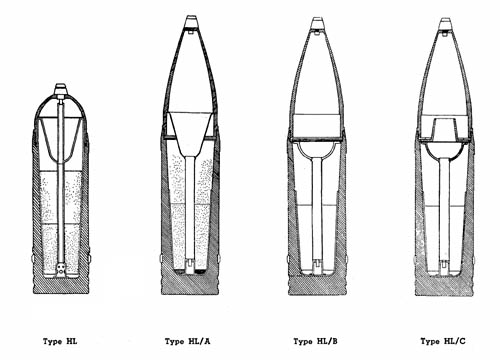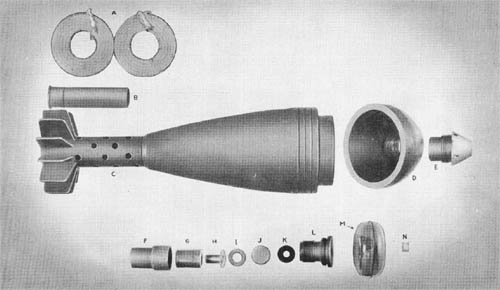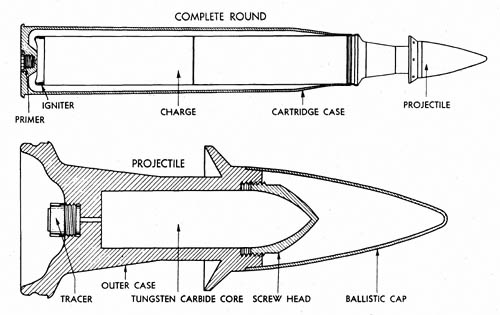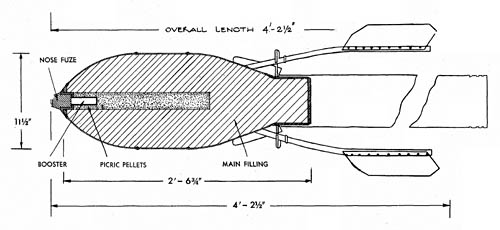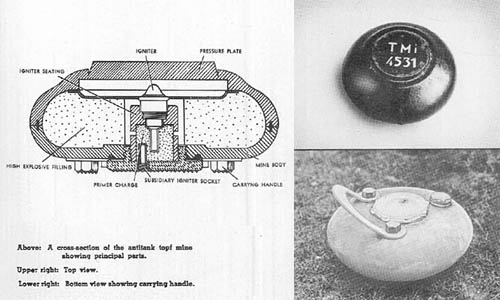
This is a large caliber steel cartridge case of different design from those customarily used by the Germans. The body is a wound cylinder made of 0.084 inch thick sheet steel three and four turns thick and turned under at the base to fit into a base assembly. The base assembly is provided with a retaining plate, screwed collar, and a disc which seals the cartridge case and prevents the escape of gases through the base. The disc is of cardboard; all the other parts are of steel.
A shallow spiral groove, about 0.003 inch deep and .23 inch wide, is rolled into the inner surface of the body under such pressure as to show the marks of the groove on the outer surface of the case. A layer of black wax is used between the overlapping coils of the body to assist waterproofing. The upper surface of the cardboard disc is also covered with black wax. It appears that this case is manufactured by coiling the sheet approximately to shape, placing the body in a die and rolling to shape with an internal roller. The base, retaining plate, and screwed collar have completely machined surfaces. All the parts have a thin surface film of oxide for protection from corrosion. This is not completely effective.
The Vickers Diamond Hardness of the body increases from about 105 near the base to 133 near the mouth. It is approximately 222 across the base except in the primer boss where it is about 280. On the retaining plate the V. D. H. varies from 160 at the center to 172 on the rim. The screwed collar is
German: p. 314
